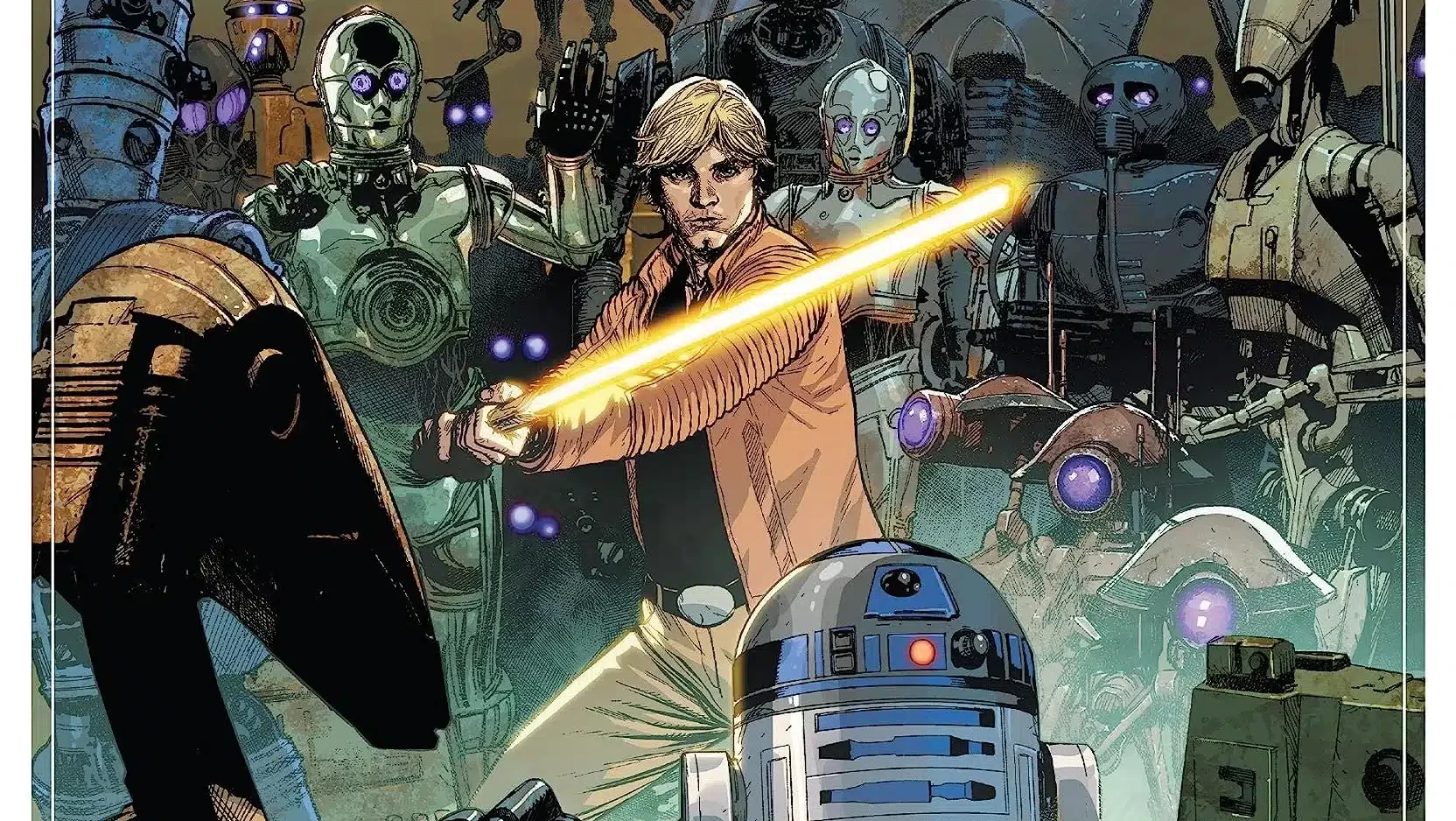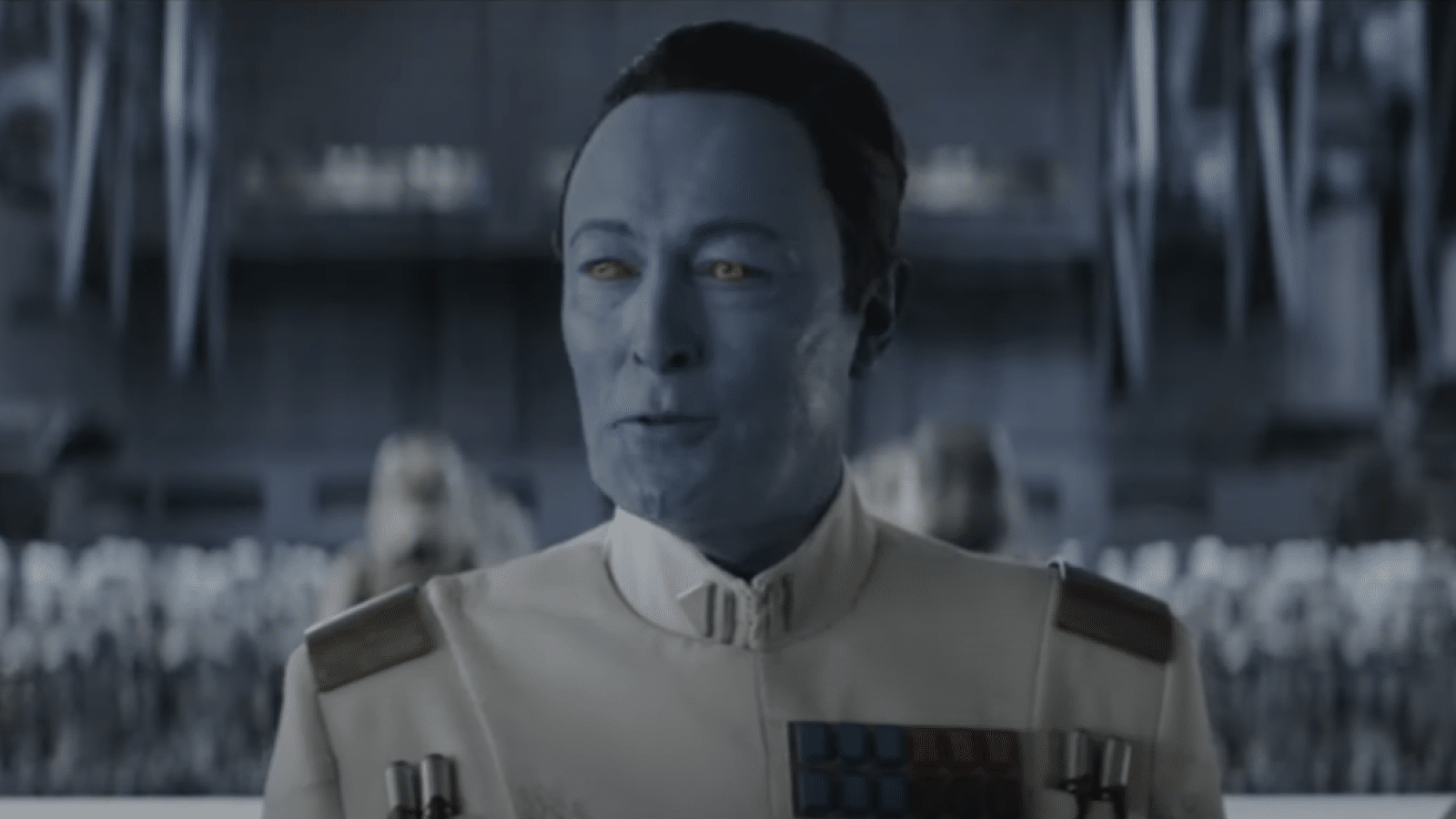A new linewide crossover kicks off as an ancient consciousness awakens in Dark Droids #1 by Charles Soule, Luke Ross, Alex Sinclair and Travis Lanham.
Then, Lando has to make some tough decisions when Lobot is targeted by that consciousness in Star Wars #37, by Charles Soule, Madibek Musabekov, Rachelle Rosenberg and Claytin Cowles.
The semi-regular crossover amongst a group of shared titles has, for better and worse, been a staple of modern comics for years now. While it doesn’t always get the kind of attention as others, the Star Wars line is no exception. Following in the footsteps of stories like “War of the Bounty Hunters” and “Crimson Reign” comes “Dark Droids”, the latest multi-title Star Wars crossover event.
Droids occupy a curious place within the Star Wars galaxy. They are, essentially, a slave race, shown to be intelligent but largely existing only to serve their organic masters, largely whether they want to or not. While characters like Threepio, Artoo and BB-8 are treated like close friends of the heroic characters (in part to further underscore the contrast between the Rebels and their Imperial/First Order foes), the Rebellion and its various counterparts — Republics both Old and New — are still shown to utilize the labor of a vast array of droids. For the most part, Star Wars stories manage to sidestep this unfortunate reality by simply not drawing attention to it. “Dark Droids”, however, does the opposite, leaning into the notion as its antagonist begins to take control of a vast swath of droids.
The story kicks off in Dark Droids #1, as the unnamed antagonist (let’s call it Scourge, for now), an unintended by-product of Qi’ra’s efforts to destroy the Sith in Hidden Empire, awakens. It is presented here simply as a kind of ancient consciousness, one which feels a desire (“hunger”) to propagate itself by spreading through droids and computer systems, like a kind of intelligent virus. From a single Imperial security droid to the entirety of an Imperial Star Destroyer it spreads, before setting its sight on the Rebellion – and its beloved droids.
The story here is fairly straightforward setup material, establishing the main threat of the story and the ways the various tie-in series will connect up to it. Of particular note is the art from Luke Ross, lush and effective. It is almost photorealistic in places, but not as stiff as similar efforts often are. A scene between Luke and Artoo, as Luke pages through an old Jedi text, is evocative despite the relative mundanity of the action. But Ross is equally adept at rendering the harder edges of the various droids in the issue, as well as working with writer Charles Soule to highlight the sense of mounting tension as the droid virus goes into action and begins to spread. The issue is at its best when it is building a sense of dread as Scourge spreads like a plague, leaving death in its wake.

From there, the story continues in Star Wars #37. It is the stronger chapter of the two, in part because it more directly taps into the ongoing narrative of the series, using the crossover as a backdrop to further a series-specific plot, and in part because it is more focused on a singular character. Lando’s close friendship with Lobot has been a running subplot throughout this volume of the series, used as a means to explore the transition from “shifty ally” to “steadfast general” Lando undergoes between The Empire Strikes Back and Return of the Jedi. At this point in the series, Lando is about ¾ of the way into that journey (which has been pushed to the background by recent events), not quite to the point where he’s being asked to lead a mission critical to the Rebel Alliance, but having earned a significant amount of trust.
When Lobot takes a turn for the worse in Star Wars #37 as a result of Scourge, however, that progress is threatened, as Lando pulls out all the stops to save his friend, even at the risk of exposing some of his actions from earlier in the series — when his journey was still closer to “selfish rogue” — knowledge of which could undo much of the progress he’s made.
It’s a smart way to both build tension into the story by giving it consequences beyond who will live or die (since we all know who’s going to show up for Jedi). Even though we know where Lando’s journey ends, all the starts and stops along the way are not known, nor is the fate of Lobot (who does NOT appear in Return of the Jedi). This adds an element of danger and higher stakes to the story, because it makes the consequences of failure more than just a standard, “if they don’t succeed, the heroes will die” plot. By zeroing in on Lando and making the big thrust of the action — at least for now — far more personal, Star Wars #37 helps elevate “Dark Droids” in its early goings by making it a vehicle for character development as much as plot development.
Force Facts
- It remains to be seen if Lando will remain one of the focal characters of the crossover, but keeping him front and center would make sense, given his established atypical relationship with another droid, L3, and the way, prior to this crossover, her fate (getting downloaded into the Millennium Falcon‘s computer, essentially forced into the kind of droid slavery against which she was such a vocal advocate) is the most overt canonical acknowledgement of the poor standing droids have in the Star Wars galaxy. For what it’s worth, Lando’s relationship with L3 is acknowledged in Dark Droids #1’s opening survey of various human/doid interactions.
- The allusions, however indirect, to L3’s philosophy also represents the Star Wars comic universe’s continued (and welcome) mining of Solo for story ideas, following the recent spotlight shown on Qi’ra (the driving force of “War of the Bounty Hunters”, “Crimson Reign” and “Hidden Empire”).
Elsewhere in a Galaxy Far, Far Away
- Unrelated to either of these comics, the last trailer for the upcoming Ahsoka streaming series seems to suggest Hayden Christensen will once again be reprising his role as Anakin.
- Max Rebo, the blue elephantine space-piano player in Jabba’s palace, stars in the latest one-shot celebrating the 40th Anniversary of Return of the Jedi, in a tale which, like many of these one-shots, reads very similarly to the old Tales from Jabba’s Palace short story anthology (in which most of the tales involved the various creatures and aliens therein wanting to kill Jabba). But the comic is notable for depicting Max in the canonical representation of his Ortolan species, in which he possesses just two legs and a trunk, with no arms, thereby using his legs for both walking and space-piano playing.
This Week in Star Wars History
On August 15, 2008, The Clone Wars animated series launched with a theatrical release of its pilot episodes cut together into a feature film, introducing fans to Ahsoka Tano for the first time.
Austin Gorton also reviews older issues of X-Men at the Real Gentlemen of Leisure website, co-hosts the A Very Special episode podcast, and likes Star Wars. He lives outside Minneapolis, where sometimes, it is not cold. Follow him on Twitter @AustinGorton






